Channel  : Finale : Finale
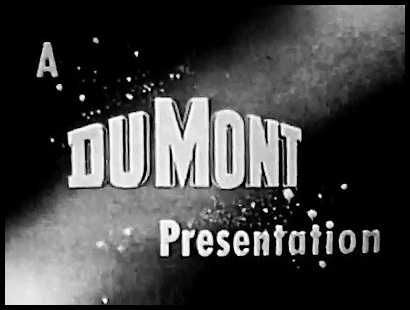
"We didn't have a lot of stations, but we had a lot
more than ABC did...The only reason ABC survived
was they had been in the radio business, and they
got the Paramount backing."
Art Elliot, a former DuMont network salesman,
in Jeff Kisseloff's The Box (see Channel 11).
By 1954, DuMont was in a rather unenviable position. The
FCC's Sixth Report and Order had restricted the number of VHF stations
to two or three in most cities, preventing DuMont (and to a certain
extent, ABC) from competing on an equal basis with the other networks,
and requiring DuMont to utilize UHF stations for program clearances.
Unfortunately, these UHF outlets went unwatched, and
returned their licenses to the FCC in unprecedented numbers as they went
dark. On the other hand, CBS and NBC, which had prime VHF affiliates in
most markets, continued to grow their TV networks; and the stars of
popular DuMont shows, such as Jackie Gleason from Cavalcade of Stars and Ted Mack of the Original Amateur Hour, signed with the two major networks as their contracts with DuMont expired.
In addition to these problems, DuMont began to see its
primary profit source, television manufacturing, decline as a source of
revenue. Among over 100 manufacturers of television sets, DuMont was
highly ranked, providing a high-priced product to a luxury market in the
early years of television. Its slogan, "First with the Finest in
Television", reflected a commitment to quality. But as television grew,
conditions soon changed, as reported by Craig and Helen Fisher in the
book Metromedia and the DuMont Legacy, published by the Museum
of Broadcasting (now the Paley Center for Media) in conjunction
with its DuMont tribute in 1984:
DuMont television sets were the Cadillac of the
industry ... But GE, RCA and Westinghouse soon
established high-volume, low-profit operations
with which DuMont did not successfully compete.
Of the profitability of the DuMont network itself, R.D. Heldenfels writes:
Although DuMont took in money — $12.3 million in
advertising revenues in 1953 — that was one-eighth
of what CBS was getting from its TV operation.
And it took a crazy quilt of deals for DuMont to
make that much. Acting more like an advertising
agency than a national network, it sold sponsors
ad time on its shows in as few as a dozen markets
carrying the program, then sold time to other
sponsors in other markets, and so on.
This strategy, probably born of necessity due to DuMont's
low number of "live" program clearances, can be seen repeatedly in
trade advertisements of the period, all of which suggested in one form
or another that the major networks were too expensive, and that DuMont
offered advertisers the opportunity to reach (presumably smaller) TV
audiences more economically. In his book, Ted Bergmann explains:
We had realized that our lack of a radio network and
all the connections with stations that would come with
it made it imperative that we create something to set us
apart from our bigger and more powerful competitors...
the "something" we decided upon was "cost efficiency".
We intended to create opportunities for advertisers
who were in a position to lay out fewer dollars. We
eliminated the "must buy" station lineup required by
the other networks, and turned one of our greatest
liabilities -- our difficulty in live station clearance --
into an asset by allowing advertisers to pick and
choose the network stations on which they wanted
their programs carried.
DuMont might have survived as the third national
television network, were it not for a sudden change of fortune at the
other struggling network, ABC.
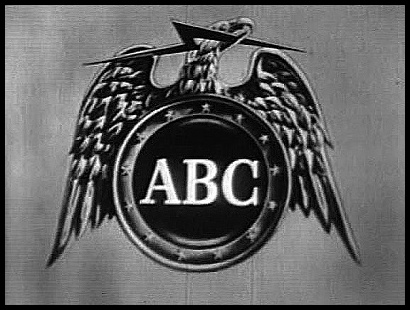
As noted earlier, ABC and DuMont battled for affiliates,
and to clear shows on other network stations. ABC was late in
establishing TV stations of its own, and for its first few years was
fourth behind DuMont, which apparently had a legitimate opportunity to
establish itself as the third national network. In 1953, however, ABC
merged with UPT (United Paramount Theaters, not to be confused with
Paramount Pictures, which was a stockholder in DuMont), and the
resulting infusion of cash revitalized the network. DuMont was already
losing ground to CBS and NBC, and with ABC's resurgence, was doomed.
Realizing this, DuMont made a last-minute attempt to
merge with ABC. According to an account by Ted Bergmann in Jeff
Kisseloff's The Box, ABC executive Leonard Goldenson approached Dr. DuMont and Bergmann and said:
What do you think of merging our two networks.
Then we could successfully compete with NBC and CBS.
We'll take over all of your network commitments.
We'll pay you five million dollars, and we'll keep the
name of the network ABC-DuMont for at least five
years, which will give you the advertising for your
television sets.
At Dr. DuMont's direction, Bergmann worked out a deal
with ABC, but Paramount vetoed the plan. One wonders if the combined
ABC-DuMont network would have been a bigger player in television than
ABC by itself proved to be over the next decade, and if so, what this
might have meant for both DuMont and ABC; but the deal was never
consummated, and DuMont was headed for oblivion.
To make matters worse, DuMont had just spent five million
dollars to build its elaborate Tele-Centre in New York City, which
opened on June 14, 1954. The facility was a showplace, but was built at a
time when New York was fading as a network origination center and as
television was converting to filmed programs, rather than the "live"
shows which originated from the Tele-Centre. DuMont had put its eggs in
the wrong basket.
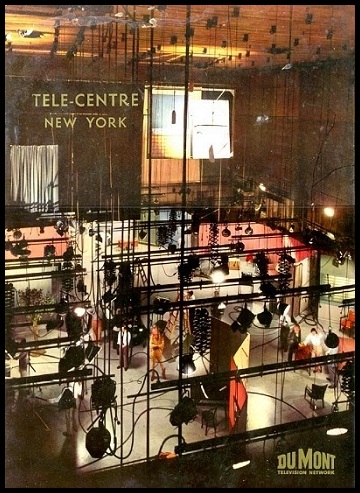
Falling behind as the other three networks became more
successful, and strapped for cash, DuMont sold its highly profitable
Pittsburgh TV station to Westinghouse in the fall of 1954 for $9.75
million, a record price at the time. This eliminated the leverage tool
which had enabled DuMont to obtain clearances for its programs in other
markets. While the sale provided ready cash for DuMont's operations, it
would prove to be a fatal blow to the network. Writes Ted Bergmann:
The sale of the station really spelled the end of the
DuMont Television Network, since the advantages
of owning the only outlet in the sixth largest market
in the country provided a major profit center to
offset the network's losses. We no longer had an
exclusive attraction to offer advertisers.
R.D. Heldenfels offers a glimpse into just how dire DuMont's circumstances were by this time:
The advertising situation worsened until the network's
revenues for the first six months of 1955 were less than
half of what they had been two years before and its
competitive position was awful. Broadcasting reported
that DuMont's six-month take was about one-seventh
of what a newly healthy ABC grossed in the same period,
about a fourth of what NBC averaged each month
and a fifth of what CBS did each month. DuMont's
stockholders demanded something be done in mid-1955.
It was only a matter of months before DuMont decided it
could not continue in the television network business. Based on the
conclusions in a report from management consultant firm Booz, Allen and
Hamilton delivered to DuMont on February 4, 1955, Ted Bergmann writes:
The decision...was then made to close down the
DuMont network and to continue operating the
New York and Washington stations as independents...
We began concentrating on Electronicam, hoping to
develop enough business to generate profits...and to
strive to become a "TV film network," offering
simultaneous exposure of a product on all stations,
as opposed to traditional syndication.
However, in early May of 1955, everything began to
come apart at the annual stockholders meeting of
the corporation.
In Watching TV, Harry Castleman and Walter J. Podrazik offer a less-than-benign version of the events leading to DuMont's demise:
In the face of such an all-around failure, Paramount
staged a coup d'etat in August, 1955, and at last took
complete control of DuMont. By teaming up with the
investment firm of Loeb & Rhodes (another major
DuMont stockholder), Paramount obtained a working
majority of stockholders and instituted immediate
changes. Dr. Allen DuMont was kicked upstairs to the
meaningless position of chairman of the board, and
Bernard Goodwin (a Paramount man) was installed
as president. Soon thereafter, DuMont announced that it
no longer considered itself a national television network.
This story is corroborated by Ted Bergmann's highly personal account in Jeff Kisseloff's The Box:
When all of this was going on, I remember sitting in
(Dr. DuMont's) study in his house, just the two of us.
It was all coming apart at that point. We were having
a drink before dinner, and he started to sob and said,
"I can't let them take my company away from me. I can't
let them do this." Then he recovered his composure,
but they did take it from him.
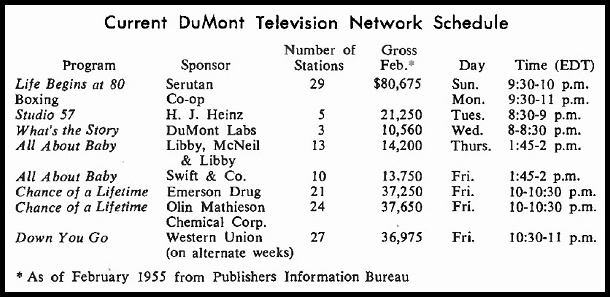
Slowly, DuMont began to dismantle its network operations.
On April 1, 1955, many of the entertainment programs on the network
(including Captain Video, DuMont's longest-running show) were
dropped. Bishop Fulton J. Sheen's last program aired a few weeks later,
on April 26 (he would soon move to ABC). By May, only eight shows
remained on the DuMont network, and the AT&T coaxial-cable
interconnection to DuMont affiliates in other cities was cancelled.
Inexpensive programs like It's Alec Templeton Time sustained what was left of the network during the summer months. A panel show called What's the Story?
was the last regularly scheduled non-sports program on DuMont, with its
final airing on September 23, 1955. After that date, DuMont reserved
its "live" network feed for occasional sporting events. The last program
of any kind on the DuMont Television Network was Boxing from St. Nicholas Arena with Chris Schenkel on August 6, 1956, although this show continued locally on WABD in New York City.
The death of the DuMont network, and the concurrent rise
of ABC, would establish the pattern of network television in the United
States for the next thirty years. (DuMont's demise is also credited for a
68% rise in advertising revenues at ABC in 1955.)
DuMont ultimately spun off its television stations into a
separate company called the DuMont Broadcasting Corporation. To
distance itself from what some saw as the failure associated with the
DuMont network, the name of the new company was eventually changed to
Metropolitan Broadcasting. In 1958, an investor named John Kluge
purchased Paramount's shares in the company, and WABD's call letters
were changed to WNEW-TV. (WTTG remains unchanged to this day.) In 1960,
the company became Metromedia.
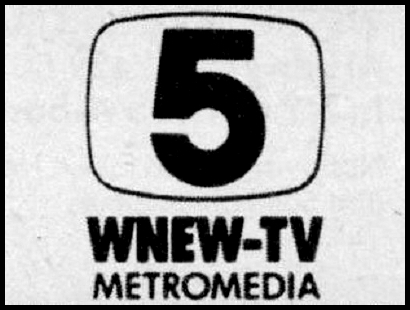
The other DuMont assets were eventually sold or merged
with other companies. DuMont sold its television manufacturing business
to Emerson in 1958, and in 1960 DuMont Laboratories merged with
Fairchild Camera and Instrument, where Dr. Allen B. DuMont served as
group general manager and senior technical consultant until his death in
1965. While TV sets and other products bearing the DuMont name
continued to be manufactured by Emerson and Fairchild into the 1970's,
it was a pale reflection of DuMont's former glory. Eventually, the proud
DuMont name was retired.
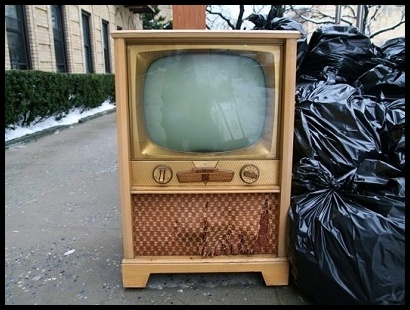
All that remains of DuMont today are the fading childhood
memories of watching DuMont shows on DuMont TV sets; a sadly declining
number of network pioneers and employees who are still alive; some
advertisements and articles in print media of the time; and a handful of
kinescopes -- dim and blurry, but highly cherished today -- of the
"live" programs from a very innovative fourth network.
Allen B. DuMont was laid to rest in Mount Hebron Cemetery
in Montclair, New Jersey. While most of us will never have the
opportunity to pay our respects to Dr. DuMont in person, if you wish to
visit the site of his memorial through the auspices of the Internet,
please click here.
Go to Channel 8: Legacy
|

